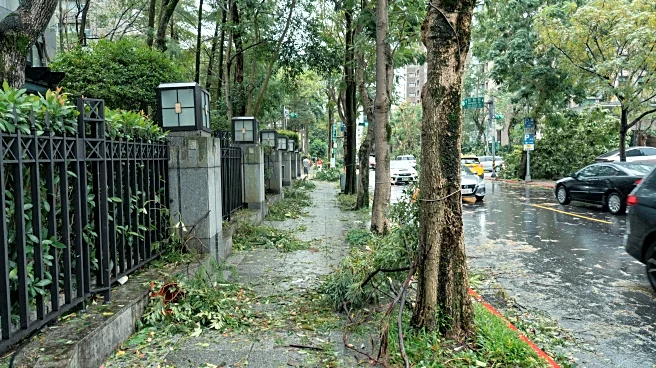What's Happening?
Typhoon Kalmaegi has made landfall in Vietnam, causing significant damage and prompting a large-scale emergency response. The storm, which previously devastated the Philippines, killing at least 114 people,
has led to the deployment of over 260,000 military personnel in Vietnam to assist with relief efforts. The typhoon brought winds of up to 92 mph, resulting in the closure of airports and evacuation of hundreds of thousands of residents. Prime Minister Pham Minh Chinh has directed emergency response efforts, emphasizing the need to provide food, water, and essential supplies to affected areas. The storm has caused flooding and landslides, with reports of damage to homes and infrastructure across several provinces.
Why It's Important?
The impact of Typhoon Kalmaegi on Vietnam highlights the vulnerability of Southeast Asian countries to severe weather events. The deployment of military personnel underscores the scale of the disaster response required to address the immediate needs of affected communities. The typhoon's arrival comes amid ongoing challenges from record rainfall and flooding, exacerbating the humanitarian situation. The storm's impact on infrastructure, including the closure of airports and disruption of transportation, poses significant challenges for recovery efforts. The situation demands coordinated international and local efforts to mitigate the effects and support the rebuilding of affected areas.
What's Next?
Vietnam faces the task of managing the aftermath of Typhoon Kalmaegi, with ongoing relief operations and efforts to restore normalcy. The government is likely to continue coordinating with local and international agencies to provide aid and support to affected communities. The focus will be on rebuilding infrastructure, ensuring the safety and well-being of displaced residents, and preparing for potential future weather events. The situation may prompt discussions on improving disaster preparedness and resilience in the region.
Beyond the Headlines
The typhoon's impact on Vietnam and the Philippines raises broader questions about climate change and its role in intensifying weather patterns. The increased frequency and severity of storms in the region may necessitate a reevaluation of disaster management strategies and infrastructure resilience. The humanitarian response to such events also highlights the importance of international cooperation and support in addressing the challenges posed by natural disasters.













